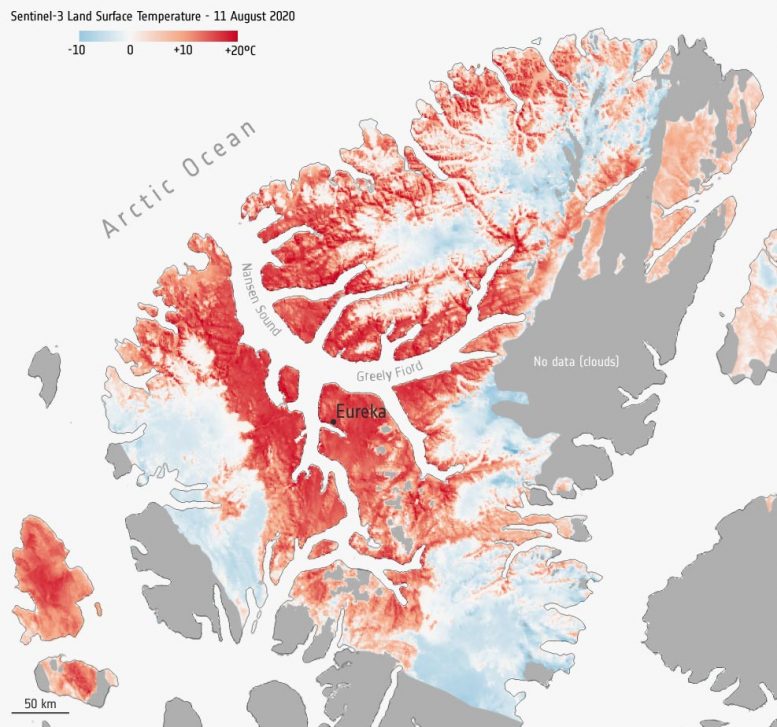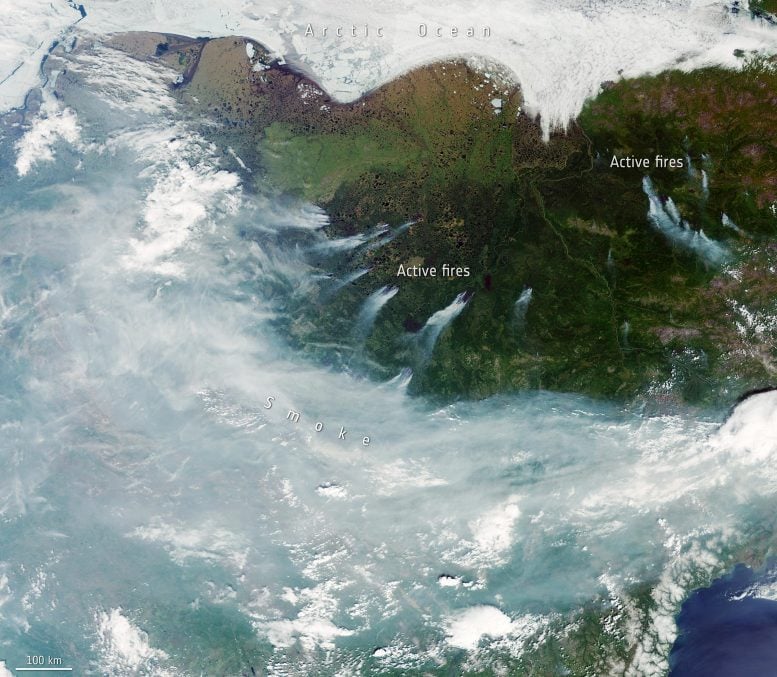ESA - 2020 A Summer Of Record Heat, Unprecedented Fire Behavior And Melting Across Arctic Lands
EDIT
According to the Copernicus Climate Change Service, July 2020 was the third warmest July on record for the globe, with temperatures 0.5°C above the 1981-2010 average. In addition, the Northern Hemisphere saw its hottest July since records began — surpassing the previous record set in 2019.
The Arctic has not escaped the heat. On 20 June, the Russian town of Verkhoyansk, which lies above the Arctic Circle, recorded a staggering 38°C. Extreme air temperatures were also recorded in northern Canada. On 11 August, Nunavut’s Eureka Station, located in the Canadian Arctic at 80 degrees north latitude, recorded a high of 21.9°C – which were reported as being the highest temperature ever recorded so far north.

This map shows the temperature of Eureka in the Canadian territory of Nunavut on 11 August 2020. This map has been generated using data from Copernicus Sentinel-3’s Sea and Land Surface Temperature Radiometer (SLSTR). While weather forecasts use air temperatures, the Sentinel-3 SLSTR instrument measures the amount of energy radiating from Earth’s surface. Credit: Contains modified Copernicus Sentinel (2020), processed by ESA, CC BY-SA 3.0 IGO
The image above shows the land surface temperature recorded on 11 August around Eureka. This map has been generated using data from Copernicus Sentinel-3’s Sea and Land Surface Temperature Radiometer. While weather forecasts use near surface air temperatures, Sentinel-3 measures the amount of energy radiating from Earth’s surface.
Although heatwaves in the Arctic are not uncommon, the persistent higher-than-average temperatures this year have potentially devastating consequences for the rest of the world. Firstly, the high temperatures fuelled an outbreak of wildfires in the Arctic Circle. Images captured by the Copernicus Sentinel-3 mission show some of the fires in the Chukotka region, the most north-easterly region of Russia, on 23 June 2020. Wildfire smoke releases a wide range of pollutants including carbon monoxide, nitrogen oxides and solid aerosol particles. In June alone, the Arctic wildfires were reported to have emitted the equivalent of 56 megatonnes of carbon dioxide, as well as significant amounts of carbon monoxide and particulate matter. These wildfires affect radiation, clouds and climate on a regional, and global, scale.

This image of Siberian fires was captured on 23 June 2020 by the OLCI instrument on board the Copernicus Sentinel-3 mission. Part of Sakha, Chukotka and the Magadan Oblast is pictured here. Sea-ice can be seen to the north while smoke dominates the bottom part of the image with a number of active fires visible in the centre.
EDIT
https://scitechdaily.com/monitoring-the-arctic-heatwave-alarmingly-high-temperatures-extreme-wildfires-and-a-significant-loss-of-sea-ice/

